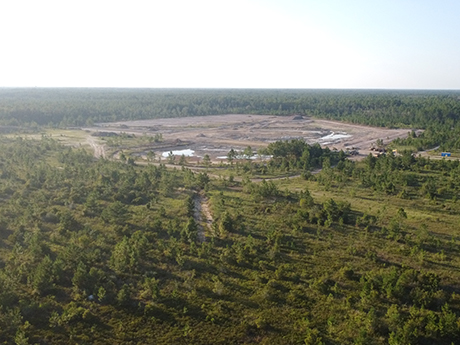For the past decade, the inventory of industrial space in the Greater New Orleans market has not been large enough to meet demand. Comprising mostly older product that would be considered Class B or C in more populous markets, New Orleans-area warehouses have an overall vacancy rate of less than 2 percent. The demand has resulted in rising rental rates.

Development of new product is warranted, but a combination of factors has prevented new projects from being built. Finally, in 2023, despite increased construction costs, high insurance costs and rising interest rates, projects are underway that will accommodate the demand in a market that is long overdue for new, modern warehouse product.
Despite having all the ingredients to be a major industrial market, including one of the country’s largest port systems, warehouse infrastructure in New Orleans is dated, mostly due to a lack of suitable land for development. Institutional ownership and investment here is limited to select groups that, while chasing higher yields, took the time to learn the market’s dynamics and build local relationships.
Historically, as brokers and tenants bemoaned a lack of product, national developers were reluctant to deploy capital to speculate in an unfamiliar and unproven locale. New Orleans is essentially an island, and the ability to scale projects to a desirable level for institutions is hard to find. For local capital, the risk to build modern warehouses on a speculative basis is too great, and the scope of investment is too heavy a lift.
The result is a market stuck in limbo, with high demand from users but precious few spaces to lease to them. Though some build-to-suits have occurred, most national tenants don’t have time to wait for long construction schedules, but rather are seeking ready-to-lease options.

With nothing available, they kick the can down the road and focus on larger, more profitable markets while making a note to revisit the New Orleans market at a later date. This scenario has played out frequently over the last decade, though now the lack of new building inventory has become so apparent that both national and local groups are responding.
While there are rumors of numerous projects in the planning stages with no discernible schedules for delivery, there are two projects of note underway that will accommodate the market’s demand, despite the higher cost to develop in the post-lockdown, high interest rate, expensive insurance environment.
The first of these is Propel Park, a 50-acre site on the NASA Michoud Assembly Facility located near I-510 in New Orleans East. Industrial Realty Group (IRG), headquartered in Los Angeles, is the developer. IRG operates a portfolio of over 150 properties in 31 states spanning more than 100 million square feet of rentable space.
Propel Park is being developed in multiple phases that will bring over 1 million square feet of new product to the market. Phase I, which will span 260,000 square feet, is currently under construction and is scheduled to be delivered in the first quarter of 2024. Textron Inc. is leasing approximately 100,000 square feet, with the balance of space being built speculatively and marketed for lease by Bill Boyer of CBRE. Groundbreaking for Phase II is scheduled for summer of 2024.
Propel Park is unique in that a land site of this scope is extremely rare in New Orleans proper, and that the NASA affiliation provides high security and levee systems to protect from flooding. The site’s proximity to the interstate system allows for short drive times to all submarkets in the Greater New Orleans area, making it appealing not only to the space-affiliated industry but also to typical distribution and logistics users. The site is located less than 10 miles from the Port of New Orleans’ proposed $1.5 billion container facility being developed to serve the largest container vessels in the Gulf Coast.
The other project set to meet the demand of the market is Gulf South Commerce Park, located on I-12 where it intersects with Highway 1088 in St. Tammany Parish, one of the fastest growing parishes in Louisiana. Crosby Development Co., a longtime developer in the area north of Lake Pontchartrain, is spearheading the development.
The site features 1,000 contiguous acres of vacant land with 189 acres available for immediate development, 92 of which are cleared and shovel-ready. All core utilities are in place, as is a PILOT Program to offer a reduced tax burden. Crosby has developed the necessary infrastructure and is currently selling land sites to developers.
Despite the headwinds of the national economy, the level of demand in the market will make these projects successful and offer proof of concept to institutional developers and investors that the Greater New Orleans industrial market can provide returns, making it worth the effort to learn an unfamiliar market.
— By Matt Taylor, President, and Lee Audibert, Broker, Property One Inc. This article was originally published in the October 2023 issue of Southeast Real Estate Business.


